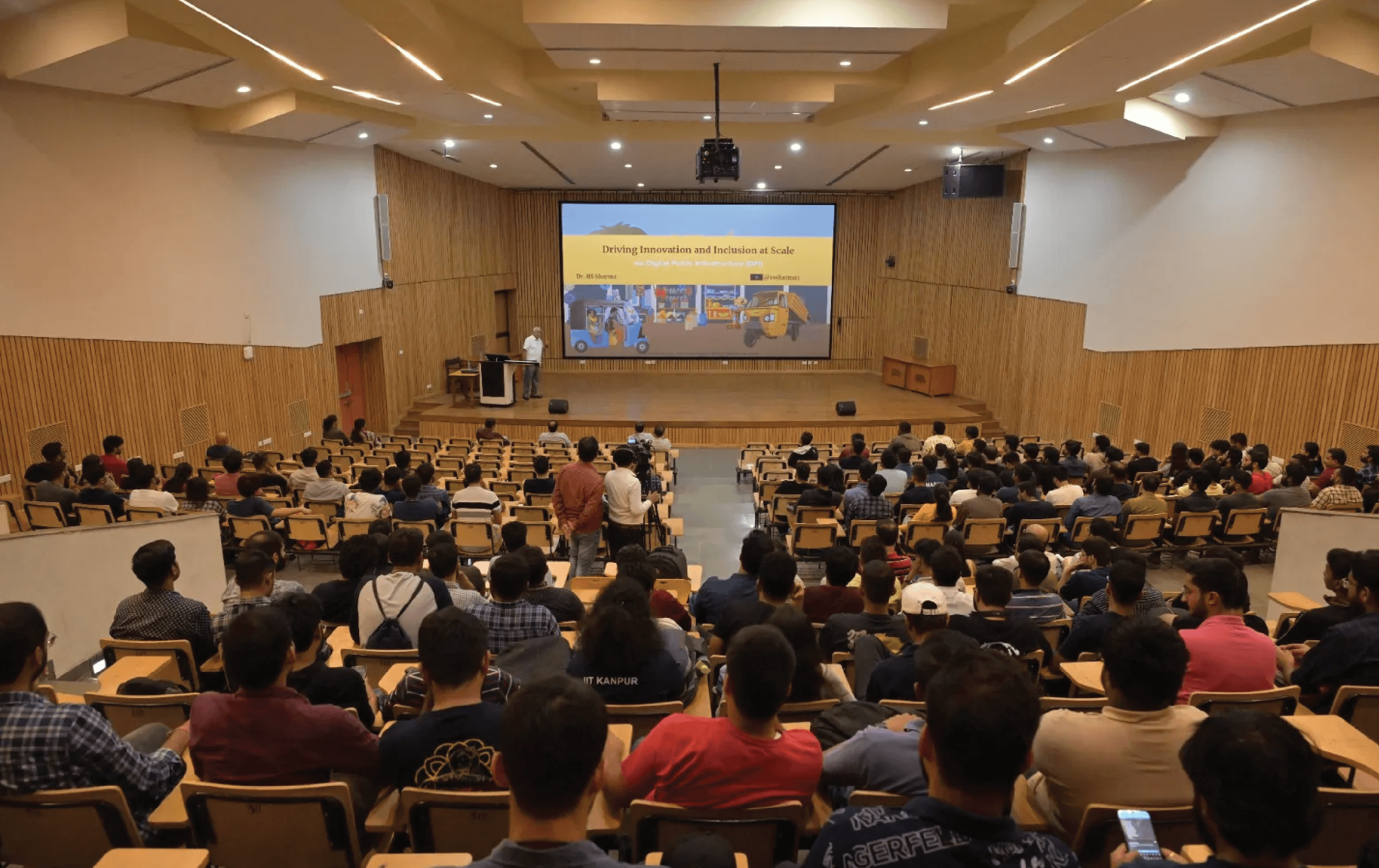In a recent event as part of “Amrit Kaal -Vimarsh,” the campus dialogue initiative at the Indian Institute of Technology Kanpur (IITK), Dr RS Sharma, a distinguished figure in India’s digital transformation landscape, delivered an enlightening talk on India’s Digital Public Infrastructure (DPI).
This discourse, aimed at inspiring students and academics to contribute to a development-centered ecosystem, delved into the significance of DPI for India’s digital future.
Dr Sharma, an IIT Kanpur alumnus, brings a wealth of experience from his tenure as a former civil servant, holding key positions in the public sector. Notable roles include Chief Executive Officer of the National Health Authority and Head of the Telecom Regulatory Authority of India (TRAI).
SIGNIFICANCE OF DIGITAL PUBLIC INFRASTRUCTURE (DPI)
In his comprehensive talk, Dr Sharma illuminated the remarkable strides made by India in the digital realm through the DPI approach, underlining its significance in shaping the nation’s digital future.
This concept, endorsed in the G20’s Leaders’ Declaration, revolves around shared digital systems, a collaborative effort of both the public and private sectors, built on secure infrastructure, open standards, and open-source software. Ultimately, it enables large-scale service delivery and progress.
Dr Sharma emphasised that while the term “DPI” may sound novel, its roots extend deep into established concepts. For instance, the Internet, with its common protocols, and standards such as GSM, SMS, CDMA, and IEEE 802.11, has laid the foundation for DPI.
AADHAAR’S PIONEERING ROLE IN DPI
The ground-breaking Aadhaar project, initiated in 2009, led to the creation of unique digital identities for Indian residents. Aadhaar’s cloud-based digital ID facilitates identity verification for various services, including bank account openings, mobile SIM issuance, and ration distribution.
It also paved the way for products like Digital Locker, electronic KYC (eKYC), and digital signature on demand (e-Sign).
ROLE IN DIGITAL LANDSCAPE
DPI strikes a balance between all-government and all-private systems, ensuring quality and avoiding monopoly issues. It provides frameworks for frequently required services, offering open protocols, shared platforms, and enabling policies for an interoperable ecosystem. Registries, such as those for healthcare providers, are vital reusable components that require continuous updates for functionality.
This approach minimises development costs, encourages modular solutions, lowers entry barriers, and fosters a diverse ecosystem of applications. Scalability is a fundamental aspect, simplifying private innovators’ adaptation.
GLOBAL RECOGNITION OF INDIA’S DPI APPROACH
Dr Sharma depicted India’s DPI approach as a harmonious blend of scalability, interoperability, innovation, and frugality. It represents a vision for a digitally inclusive future, resonating not only within India but also on the global stage, as evidenced by the G20 declaration.
Courtesy : IndiaToday








